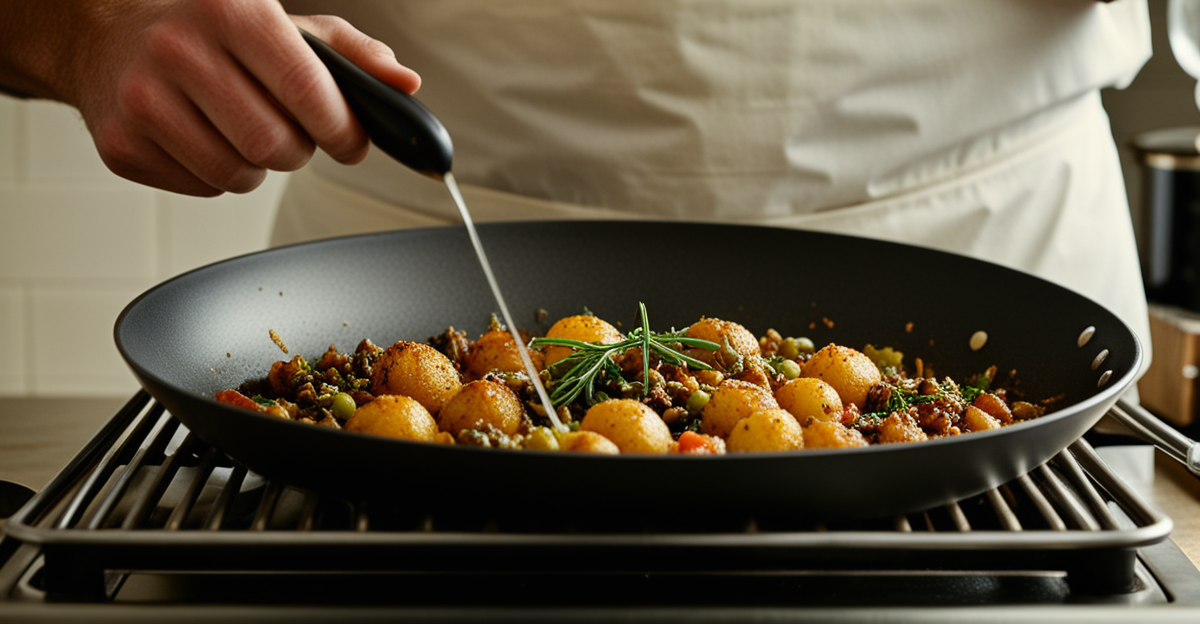Core Characteristics of Traditional UK Cuisine
Traditional UK food traits are distinguished by hearty flavors, simple yet robust ingredients, and dishes steeped in British culinary heritage. Classic UK ingredients such as root vegetables, game meats, and various cuts of lamb or beef play a foundational role. Staples like potatoes, cabbage, and oats appear frequently, underpinning many regional recipes.
Regional diversity is significant. For example, Cornish pasties from Cornwall emphasize pastry and filling, while Scottish cuisine highlights smoked salmon and haggis, reflecting historic availability and local customs. Historic influences—ranging from Norman to Victorian eras—shape traditional dishes, lending a rich backstory to recipes still enjoyed today.
In the same genre : What Are the Health Benefits of Traditional UK Breakfasts?
Cooking methods emphasize practicality and flavor preservation. Roasting, stewing, and baking are dominant techniques, each maximizing taste and texture through slow, steady heat. Preservation methods such as curing and pickling also anchor traditional food preparation, ensuring ingredients last through changing seasons. These core characteristics define not only recipes but also culinary identity, making traditional UK cuisine a textured blend of simplicity, history, and regional nuance.
Core Characteristics of Traditional UK Cuisine
Traditional UK food traits are deeply rooted in British culinary heritage, emphasizing hearty, comforting flavors and a reliance on time-honored ingredients. Classic UK ingredients such as root vegetables, oats, lamb, and locally sourced fish play central roles. These core ingredients manifest in iconic dishes like roast beef with Yorkshire pudding, shepherd’s pie, and hearty stews.
Topic to read : What are the best techniques for making a traditional British trifle?
Regional diversity heavily influences traditional UK food traits. For instance, Scottish cuisine highlights game and salmon, while Cornish recipes focus on seafood and pasties. Historical influences—from Norman to Victorian eras—have shaped British culinary heritage, enriching its flavor profile and ingredient choices.
Typical cooking methods found in traditional recipes include slow roasting, baking, boiling, and stewing, which enhance texture and depth of flavor. These techniques lock in moisture and develop robust tastes, reflecting practical approaches suited to the UK’s often cool climate. Overall, traditional UK food traits showcase simplicity balanced with satisfying wholesomeness, anchored in the natural qualities of classic UK ingredients.
Ways Traditional UK Cuisine Shapes Modern Cooking
Traditional UK food traits provide a vital foundation for innovation in modern British cooking. Chefs increasingly adapt historic recipes to suit contemporary tastes, maintaining core British culinary heritage while introducing new flavors and presentation styles. For instance, classic UK ingredients like lamb or root vegetables are transformed through lighter cooking methods or creative seasoning, appealing to today’s health-conscious diners.
Modern reinterpretations of iconic UK dishes often blend tradition with innovation. Take the classic shepherd’s pie—chefs might use quinoa or cauliflower mash atop slow-braised lamb, retaining the original’s heartiness but enhancing nutritional content. These examples show how core traditional flavors remain central even as techniques evolve.
Moreover, traditional preservation methods such as curing, pickling, and roasting continue to influence modern practice. These techniques contribute depth and complexity to dishes and encourage sustainable use of seasonal produce. Their revival and integration into modern menus not only honour UK’s culinary past but also offer chefs dynamic tools for innovation. In this way, British culinary heritage lives on dynamically within evolving, modern British cooking.
Ways Traditional UK Cuisine Shapes Modern Cooking
Traditional UK food traits continue to influence modern British cooking through innovation in UK cuisine that respects culinary evolution. Chefs adapt historic recipes by refining textures or adjusting seasoning to meet contemporary tastes without losing the essence of British culinary heritage. For example, classic dishes such as shepherd’s pie or roast beef are often reinvented with lighter sauces or novel garnishes, combining tradition with a modern flair.
In terms of preservation, traditional curing, pickling, and roasting techniques are thoughtfully integrated into current kitchens. These methods not only enhance flavor but also offer sustainable ways to prepare ingredients, connecting the past with present-day culinary practice. This continuity underlines how classic UK ingredients maintain their relevance even as preparation styles advance.
Innovation frequently stems from valuing the simplicity and robust flavor profiles that characterize traditional UK cuisine. By balancing these classic elements with contemporary presentation and technique, modern British cooking revitalizes long-standing dishes while encouraging exploration. This evolution reflects a dynamic culinary landscape where heritage inspires creativity, maintaining a dialogue between past and future in British food culture.
Core Characteristics of Traditional UK Cuisine
Traditional UK food traits reflect a deep connection to British culinary heritage, characterized by simplicity, heartiness, and regional specificity. Central to this cuisine are classic UK ingredients—such as root vegetables, lamb, and oats—that provide the foundation for many beloved dishes. These ingredients are typically prepared using methods designed to maximize flavour and preserve texture, including slow roasting, stewing, and baking.
Regional diversity plays a crucial role. For example, Scotland’s use of smoked salmon and game meats contrasts with Cornwall’s focus on seafood and pasties, demonstrating how geography and history shape traditional UK food traits. The weather and agricultural cycles have influenced the reliance on preservation techniques like curing and pickling, ensuring ingredients remain usable across seasons.
Cooking methods further highlight practicality. Roasting emphasizes caramelization and moisture retention, while stewing allows tougher cuts of meat to become tender and infused with rich flavors. This blend of classic UK ingredients, regional influences, and traditional techniques not only defines the textures and flavors of British cuisine but also preserves the stories and customs embedded in its culinary heritage.
Core Characteristics of Traditional UK Cuisine
Traditional UK food traits root deeply in British culinary heritage, combining robust flavors with practical simplicity. Classic UK ingredients such as root vegetables, lamb, and oats form the backbone of many traditional dishes, prized for their natural taste and versatility. These ingredients are often prepared using slow, time-honored cooking methods like roasting, stewing, and baking to enhance flavor and texture.
Regional diversity importantly shapes traditional UK food traits. For instance, Scotland emphasizes game meats and smoked salmon, reflecting its rugged landscapes and fishing traditions. Cornwall, by contrast, showcases seafood and savory pastries like pasties, highlighting coastal influences. Historical periods—from Norman through Victorian—contributed layers of complexity, introducing new ingredients and cooking styles that enriched British culinary heritage.
Common cooking methods in traditional recipes focus on practicality and flavor development. Roasting caramelizes meat while retaining moisture; stewing breaks down tougher cuts for tenderness, releasing deep flavors. Preservation techniques such as curing and pickling evolved to sustain classic UK ingredients through seasonal changes, underscoring a resourceful, seasonal approach central to British culinary identity.
Core Characteristics of Traditional UK Cuisine
Traditional UK food traits are defined by a strong connection to British culinary heritage, reflected in the use of classic UK ingredients such as root vegetables, lamb, oats, and various cuts of beef. These ingredients form the base of many iconic dishes, delivering hearty, comforting flavors that have endured across centuries.
Regional diversity plays a vital role in shaping traditional UK food traits. Differences in climate, geography, and history influence ingredient availability and cooking styles. For example, Scotland’s emphasis on game and smoked salmon contrasts sharply with Cornwall’s seafood-rich offerings like pasties. This regional variation highlights the adaptability of British culinary heritage to local resources.
Common cooking methods in traditional recipes focus on practicality and maximizing flavor. Slow roasting, stewing, baking, and boiling are central techniques that tenderize tougher cuts, develop depth, and retain moisture. Preservation methods such as curing and pickling further reflect seasonality and resourcefulness, ensuring that classic UK ingredients can be enjoyed year-round while maintaining robust, authentic tastes.








